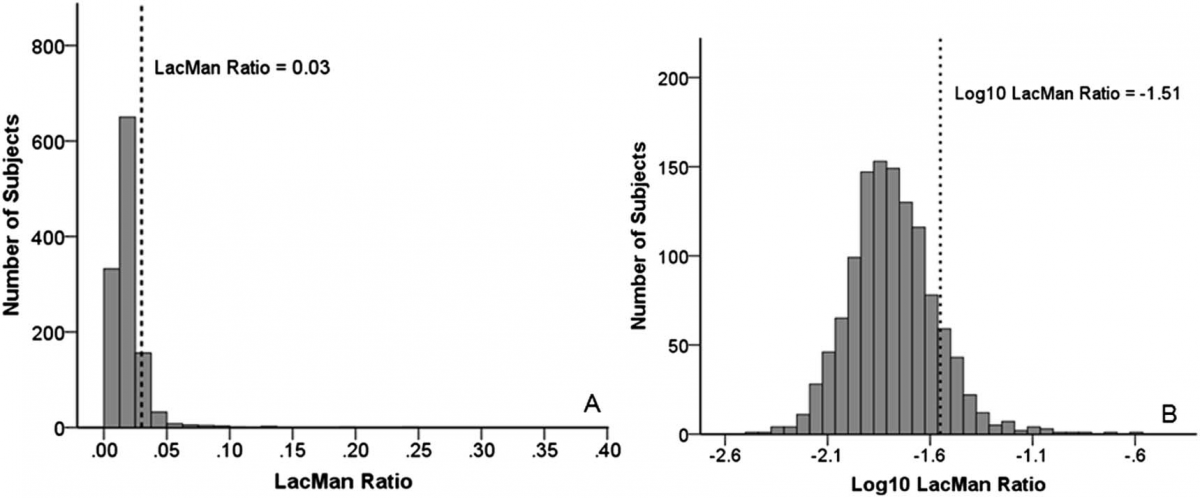Determinants of intestinal permeability in healthy first-degree relatives of individuals with Crohn’s disease.

In this study researchers were looking for genetic, environmental, and microbial factors that may be influence the intestinal permeability of our healthy subjects.
Why was intestinal permeability looked at? Intestinal permeability is a measure of “leakiness” of the gut. Increased intestinal permeability, or leakiness, may thus allow passage of gut contents (food, bacteria etc.) which can trigger an intestinal inflammatory response. Several studies have documented that changes in intestinal permeability can predict the course of IBD.
What is the LacMan Ratio? It is a tool used to assess intestinal permeability. To find this ratio, Subjects drink a solution that contains a large molecule (lactulose) that can only cross the gut barrier when it is damage. The solution also contains a small molecule (mannitol) that always crosses the barrier, independent of any damage to the gut barrier. So, by measuring the ratio of the two molecules (LacMan ratio), scientist can tells us how well the intestines are doing their job.
What did this study find? The LacMan ratio was found to not be heritable, meaning that genetics may only play a small role in healthy intestinal permeability. The ratio was also not affected by microbial composition. From this we can postulate that other factors such as the environment, would then likely have a greater impact on the deterioration of healthy intestinal permeability.
Kevans D, Turpin W, Madsen K, Meddings J, Shestopaloff K, Xu W, Moreno-Hagelsieb G, Griffiths A, Silverberg MS, Paterson A, Croitoru K; GEM Project.
Inflamm Bowel Dis. 2015 Apr;21(4):879-87. doi: 10.1097/MIB.0000000000000323.
http://www.ncbi.nlm.nih.gov/pubmed/25734694